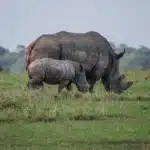Regarding trekking adventures, only some destinations can rival the awe-inspiring beauty and challenge that Mount Kenya offers. Located in East Africa, Mount Kenya is the second-highest peak on the continent, boasting diverse ecosystems, dramatic landscapes, and a rich cultural heritage. If you’re an outdoor enthusiast seeking an unforgettable trekking experience, look no further. In this blog post, we’ll guide you through the essentials of trekking Mount Kenya.
The Splendor of Mount Kenya
Mount Kenya is a UNESCO World Heritage Site and a key component of Mount Kenya National Park. The mountain is an extinct stratovolcano characterized by its jagged peaks, deep valleys, and pristine glacial lakes. Trekking here promises breathtaking vistas, unique flora and fauna, and encounters with local wildlife, including buffalo, elephants, and various bird species.
Choosing the Right Route
Mount Kenya offers several trekking routes, catering to different skill levels and preferences. The most popular routes include:
- Sirimon Route: Known for its gradual ascent and stunning views, this route is perfect for trekkers looking for a less challenging option.
- Chogoria Route: Starting from Chogoria town, this route offers trekkers the chance to explore pristine alpine moorlands and the beautiful Gorges Valley.
- Naro Moru Route: Known as the quickest way to reach Point Lenana (the third-highest peak), it’s favored by those looking for a more direct and challenging ascent.
Best Time to Trekking Mount Kenya
Mount Kenya can be trekked year-round, but the dry seasons from January to February and July to October are the most popular. These months offer clear skies and more manageable temperatures for trekking.
Essential Gear and Preparation
To ensure a successful trek, consider the following:
- Adequate clothing for varying temperatures.
- Sturdy, waterproof hiking boots.
- A reliable guide and porters for support.
- Permits and park fees.
- Acclimatization to prevent altitude sickness.
The Summit Experience
Reaching the summit, Point Lenana (4,985 meters/16,355 feet), is remarkable. Witnessing the sunrise from this vantage point is unforgettable; on clear days, you can even spot Mount Kilimanjaro in the distance.
In conclusion, trekking Mount Kenya offers an unparalleled adventure for nature enthusiasts and avid trekkers. With its diverse landscapes, captivating wildlife, and challenging routes, it’s no wonder this East African gem is a must-visit destination. Prepare well, respect the environment, and embark on a journey that will leave you with lasting memories of a truly majestic mountain.




